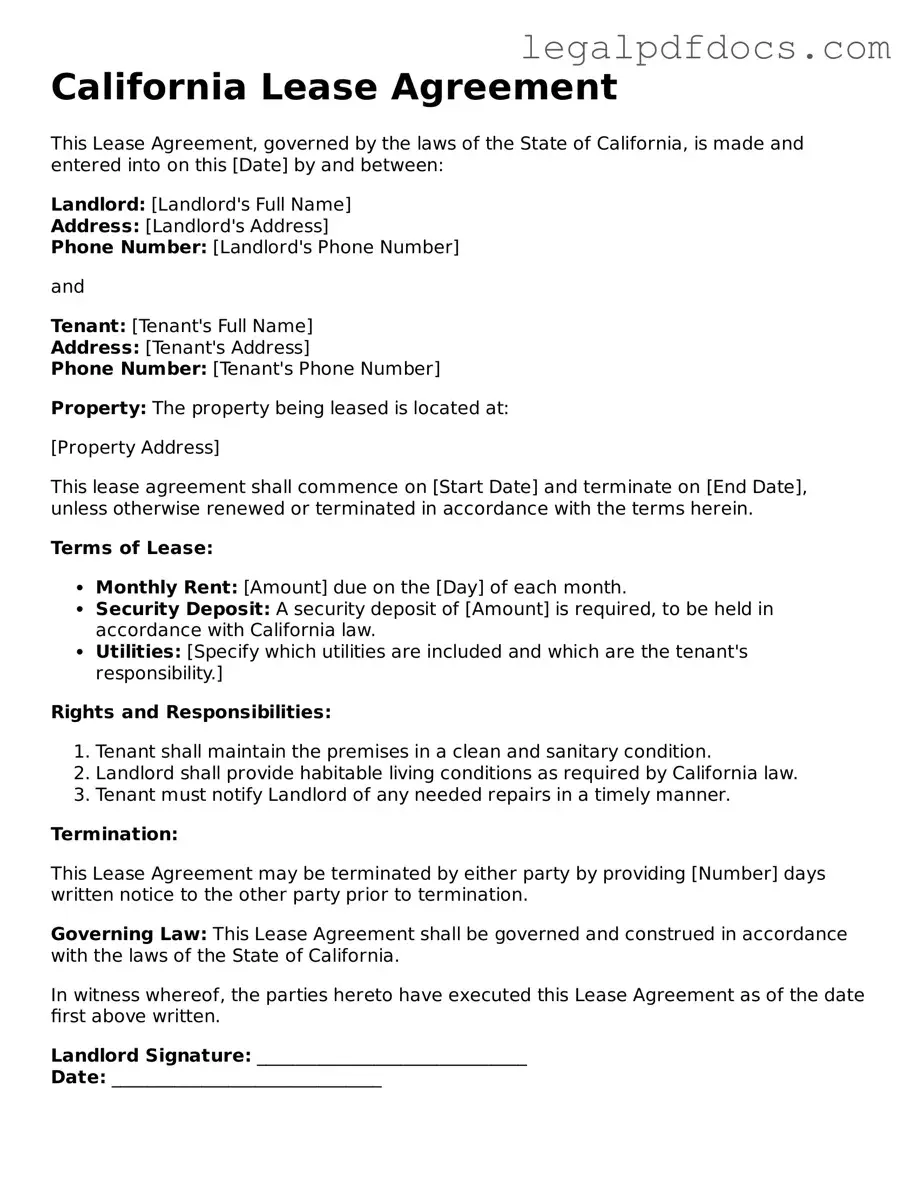The California Lease Agreement form is a crucial document that establishes a clear understanding between landlords and tenants regarding the terms of renting a residential property. This form typically outlines essential details such as the duration of the lease, the monthly rent amount, and the security deposit required. It also specifies the responsibilities of both parties, including maintenance obligations and rules regarding property use. Additionally, the agreement addresses important issues such as late payment penalties, conditions for terminating the lease, and procedures for handling disputes. By clearly delineating these aspects, the California Lease Agreement helps to foster a respectful and cooperative relationship between landlords and tenants, ensuring that both parties are aware of their rights and responsibilities throughout the rental period. Understanding this form is vital for anyone involved in the rental process, as it lays the groundwork for a successful tenancy and helps to prevent misunderstandings down the line.
